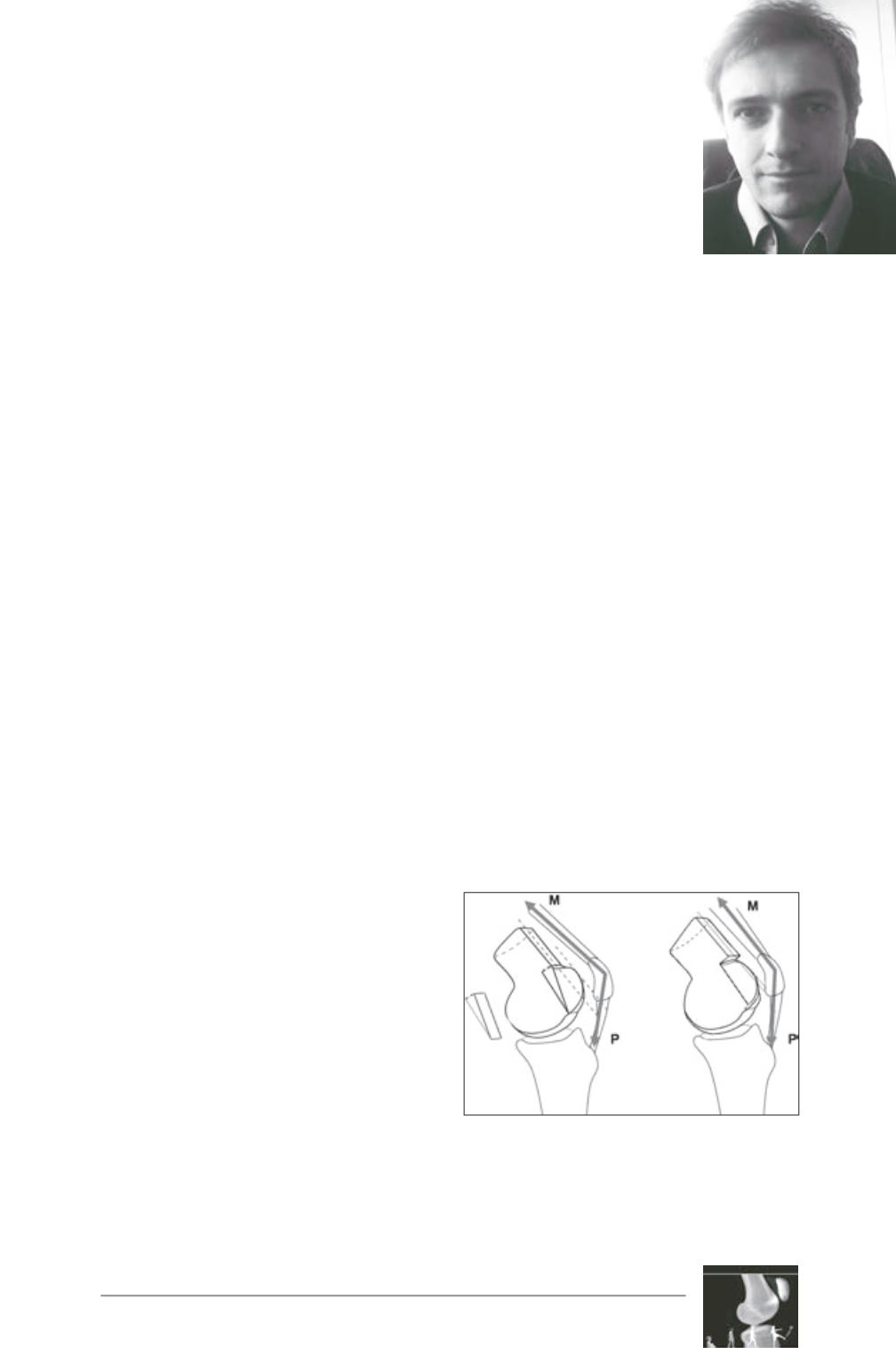

199
Introduction
The importance of dysplastic trochlea as a
component of patellar instability has long been
recognized. Elevation of the lateral trochlear
facet was first described by Albee [1] in 1915.
However, lateral trochlear elevation fell out of
favor because of subsequent patellofemoral
osteoarthritis. In 1966, operations to correct the
abnormality by deepening the sulcus were
introduced by Masse [2], who suggested
removing subchondral bone and impacting the
articular cartilage with a punch. This technique
was later modified by Henri Dejour [3], who
performed osteotomy of both femoral condyles
to create a V-shaped trochlear groove. Von
Knoch
et al.
[4] described another technique,
known as “the Bereiter technique”, in which an
osteochondral flap is raised from the trochlea
and a bony sulcus is fashioned using burrs; the
flaps are then depressed, making a smooth
groove, and fixed by vicryl tape; the technique
was later described by Blønd and Schöttle [5]
under arthroscopic control. A third type of
trochleoplasty was described by Goutallier
et
al.
[6], who performed “recession” trochleo
plasty, whereby the prominent groove is
recessed to the level of the anterior femoral
cortex, without deepening the groove itself.
This procedure is technically less demanding
than a deepening trochleoplasty. Trochlear
wedge recession decreases patellofemoral
compression by increasing the angle between
the quadriceps muscle force and the patellar
tendon force (fig. 1). The aim is not to fashion
a groove, but to reduce the bump without
modifying patellofemoral congruence.
The purpose of the present short-term retro
spective study was to determine whether
recession wedge trochleoplasty according to
the Goutallier technique was suitable for the
surgical treatment of patellar instability with
major dysplastic trochlea, defined as a domed,
rather than flat or shallow, chondral surface of
the proximal trochlea. It was hypothesized that
Recession wedge
trochleoplasty for major
trochlear dysplasia
M. Thaunat, C. Bessiere, N. Pujol,
P. Boisrenoult, P Beaufils
Fig. 1: Depression trochleoplasty according to the
Goutallier technique [12]: the aim is not to fashion
a groove but to reduce the bump without modifying
patellofemoral congruence. The trochlear wedge
recession decreases patellofemoral compression
by increasing the angle between the quadriceps
muscle force (M) and the patellar tendon force (P).











